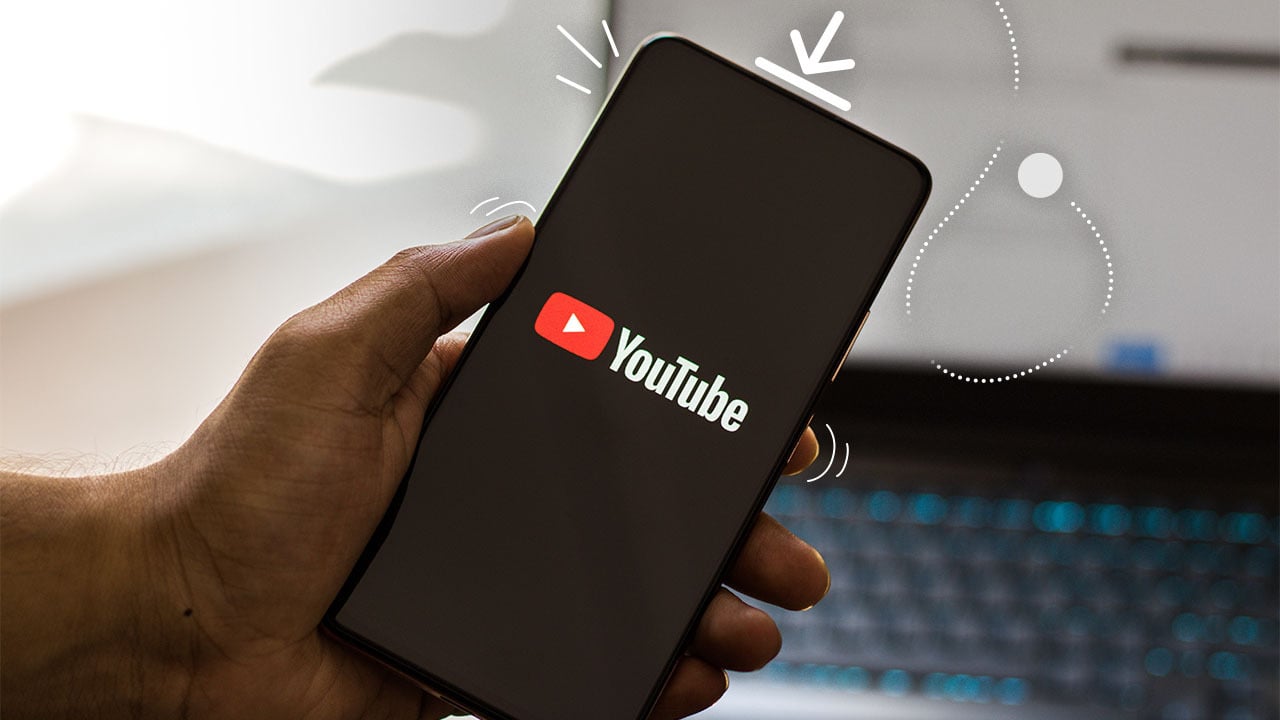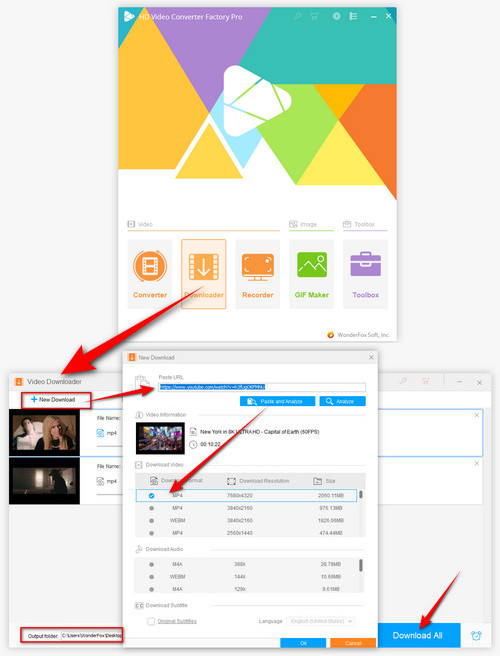Ever found yourself wanting to watch your favorite YouTube videos on the go? Whether you're traveling, at work, or just in a place with spotty internet, downloading those videos to a flash drive can be a game changer. In this post, we'll explore how to easily download YouTube videos and why having them stored on a flash drive can enhance your viewing experience. Let’s dive into the benefits and steps involved!
Why Download YouTube Videos?

Downloading YouTube videos offers several advantages that can elevate your viewing experience. Here are some compelling reasons to consider:
- Offline Access: No more worrying about buffering or slow internet connections! By downloading videos, you can watch them anytime, anywhere, without relying on Wi-Fi or mobile data.
- Data Saving: Streaming videos can consume a lot of data. By downloading them, you save on your data plan—especially useful if you're on a limited plan.
- Curate Your Collection: You can create a personalized library of your favorite videos. Whether it’s tutorials, music, or vlogs, having them all in one place makes it easy to revisit them.
- Better Quality: Sometimes, the downloaded version is of higher quality than what you experience when streaming due to varying internet speeds.
- Easy Sharing: Got friends or family who want to watch a particular video? Simply plug your flash drive into their device and share the content instantly!
Additionally, downloading YouTube videos allows you to preserve content that may be removed or made private in the future. Imagine finding a gem of a tutorial or an inspiring speech, only to discover later that it's no longer available. By downloading it, you keep it safe for your future enjoyment.
Moreover, for those who enjoy creating content, having downloaded videos can serve as references or inspiration for your projects. Want to reference a specific scene or quote? It’s all right there at your fingertips.
In conclusion, downloading YouTube videos to a flash drive not only makes them portable but also enhances accessibility and viewing pleasure. Whether you’re a frequent traveler, a student, or just someone who enjoys quality content, this simple action can greatly enrich your experience.
Also Read This: How to Upload iPhone Video to YouTube: A Simple Tutorial
3. Requirements for Downloading YouTube Videos

Before diving into the exciting world of downloading YouTube videos to your flash drive, it’s essential to gather a few requirements. This will ensure a smooth process, allowing you to enjoy your favorite content wherever you go. Here’s what you’ll need:
- A Computer or Laptop: You’ll need a device to run the downloading software or online service.
- Internet Connection: A stable connection is crucial for downloading videos efficiently.
- Downloading Software or Online Service: Choose from many options, such as:
- 4K Video Downloader
- YTD Video Downloader
- ClipGrab
- Online services like SaveFrom.net
- Flash Drive: Make sure your flash drive has enough space for the videos you plan to download.
Once you’ve gathered these items, you’re ready to move on to the actual downloading process. The next steps will walk you through everything you need to do to get those videos onto your flash drive!
Also Read This: How Many Views on YouTube to Make $100 and How Much Money Can You Earn?
4. Step-by-Step Guide to Download Videos from YouTube
Now that you have everything you need, let’s get into the nitty-gritty of downloading videos from YouTube. Follow these simple steps, and you’ll have your favorite videos saved on your flash drive in no time!
- Choose Your Video: First, navigate to YouTube and find the video you want to download. Copy the URL from the address bar.
- Open Your Downloading Tool: Launch the software or website you’ve chosen. For example, if you're using 4K Video Downloader, open the application.
- Paste the URL: Look for an option that says “Paste Link” or similar. Click it, and your copied URL will be inserted automatically.
- Select Format and Quality: Most tools will allow you to choose the format (MP4, MKV, etc.) and quality (720p, 1080p, etc.). Pick the options that suit your needs best.
- Set the Destination: Before hitting the download button, set the destination folder where you want the video to be saved. Make sure to select your flash drive as the destination so the video saves directly there.
- Download the Video: Click the download button and watch as your video is saved to your flash drive. This might take a few moments, depending on your internet speed and the video size.
- Safely Eject Your Flash Drive: Once the download is complete, don't forget to safely eject your flash drive from your computer. This will help prevent any data corruption!
And there you have it! You’ve successfully downloaded a YouTube video to your flash drive. Now you can take it anywhere and enjoy it offline, whether you’re on a trip or just lounging at home. Happy watching!
Also Read This: Is Catchy Comedy Available on YouTube TV? Exploring Your Viewing Options
5. How to Transfer Downloaded Videos to a Flash Drive
Transferring your downloaded YouTube videos to a flash drive is a straightforward process, and it's an excellent way to free up space on your device while keeping your favorite content handy. Let’s break it down step by step:
- Connect Your Flash Drive: Start by plugging your flash drive into a USB port on your computer. Wait for your computer to recognize it. You should see a notification or the drive appear in your file explorer.
- Locate Your Downloaded Videos: Open the folder where you've saved your YouTube videos. Usually, this is the "Downloads" folder unless you've specified a different location when downloading.
- Select the Videos: Click on the video files you want to transfer. You can hold down the Ctrl key (or Command on Mac) to select multiple files at once. If you want to select all videos, you can use Ctrl + A (or Command + A on Mac).
- Copy the Files: Right-click on any of the selected videos and choose Copy. Alternatively, you can press Ctrl + C (or Command + C on Mac) to copy them.
- Open Your Flash Drive: Now, navigate to your flash drive in your file explorer. Open it up, and you'll see an empty space waiting for your videos.
- Paste the Videos: Right-click inside the flash drive window and select Paste. You can also use Ctrl + V (or Command + V on Mac) to paste the videos. Depending on the number and size of your files, this may take a moment.
- Safely Eject Your Flash Drive: Once the transfer is complete, make sure to safely eject your flash drive. This can usually be done by right-clicking on the drive icon and selecting Eject. This step prevents any data corruption.
And there you go! Your YouTube videos are now stored on your flash drive, ready for viewing on any compatible device!
Also Read This: Disabling Video Previews on YouTube for Faster Browsing
6. Best Practices for Portable Video Storage
Storing videos on a flash drive can be incredibly convenient, but to ensure that your files remain safe and accessible, following best practices is crucial. Here are some tips you should consider:
- Choose the Right Flash Drive: Not all flash drives are created equal. Look for drives with high read/write speeds, especially for large video files. Brands like SanDisk and Kingston are often recommended for their reliability.
- Organize Your Files: Create folders on your flash drive to keep your videos organized. You might want to categorize them by genre, date, or any other system that makes sense to you. This saves time when searching for that one specific video!
- Backup Your Data: While flash drives are handy, they're not infallible. Consider backing up your videos to a cloud storage service like Google Drive or Dropbox as a secondary measure. This way, if you lose your flash drive, you won't lose your precious videos.
- Safeguard Against Corruption: Eject your flash drive properly every time you remove it from the computer. Unplugging it without safely ejecting can lead to corrupted files.
- Regularly Check Your Files: Every few months, take some time to check that your videos are still accessible. Sometimes, flash drives can fail, and it’s better to notice an issue sooner rather than later.
- Consider File Formats: Ensure the videos are in a widely compatible format (like MP4 or MKV) to avoid playback issues on different devices. This way, you can enjoy your videos anywhere, anytime!
By following these best practices, you’ll ensure that your portable video library is not only accessible but also safe and well-organized. Happy viewing!
Also Read This: How to Watch VR YouTube Videos Easily
7. Troubleshooting Common Issues
Downloading YouTube videos to a flash drive can sometimes present challenges. Don't worry; most issues are easily fixable! Here’s a handy guide to troubleshoot some common problems you might encounter:
- Video Not Downloading: If your chosen software isn’t downloading the video, check your internet connection first. A slow or unstable connection can hinder the process. Also, make sure you're using the correct URL; sometimes, the video might be restricted or set to private.
- Insufficient Space on Flash Drive: Before starting your download, check if your flash drive has enough space. Right-click on the drive icon on your computer, select 'Properties,' and see how much free space is available. If it's low, consider deleting unnecessary files or transferring them to another device.
- Unsupported File Format: If the downloaded video doesn’t play, it might be in a format your device doesn’t support. Most video downloading tools allow you to choose from several formats (like MP4, AVI, etc.). Make sure to select a compatible format for your intended use.
- Slow Download Speeds: If your downloads are taking too long, clear your browser cache or try using a different browser. Additionally, you might want to pause other downloads or streaming services that can use up your bandwidth.
- Corrupted Files: If a video file won't open, it may have been corrupted during the download process. Try downloading the video again. If problems persist, consider using a different downloading tool; some are more reliable than others.
Don’t forget to check the settings of your downloading software! Sometimes, a simple toggle or adjustment can solve multiple issues at once. And if you’re still having trouble, look for support forums or FAQs related to the specific software you’re using. There’s a community out there ready to help!
8. Conclusion
Downloading YouTube videos to a flash drive is an incredibly convenient way to enjoy your favorite content on the go. Whether for offline viewing during a long trip or sharing with friends, having videos at your fingertips enhances the overall experience.
By following the steps outlined in this guide and keeping troubleshooting tips handy, you can ensure a smooth downloading process. Remember, always respect copyright laws and adhere to YouTube's terms of service.
As technology evolves, so do the tools and techniques for downloading videos. Stay updated with the latest software and methods, and don't hesitate to experiment a bit. Who knows, you might just discover an even easier way to get your favorite videos onto your flash drive!
Now, go ahead and start downloading those videos. Happy viewing!
 admin
admin








